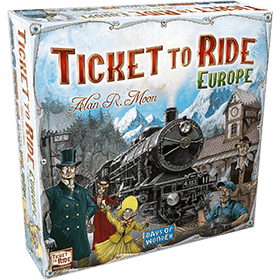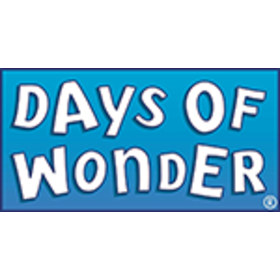Zug um Zug: Europa TTR, TTRE
 Von den schroffen Hügeln bei Edinburgh zur sonnenüberfluteten Hafenanlage von Konstantinopel, von den staubigen Gassen Pamplonas zu einem zugigen Bahnhof in Berlin – Zug um Zug Europa entführt dich zu einem neuen Zug-Abenteuer durch die großen europäischen Städte zur Zeit der Jahrhundertwende.
Von den schroffen Hügeln bei Edinburgh zur sonnenüberfluteten Hafenanlage von Konstantinopel, von den staubigen Gassen Pamplonas zu einem zugigen Bahnhof in Berlin – Zug um Zug Europa entführt dich zu einem neuen Zug-Abenteuer durch die großen europäischen Städte zur Zeit der Jahrhundertwende.
Spielerzahl: 2 - 5
Spieldauer: 12 mn
Komplexität: 2 / 5
Spiele Zug um Zug: Europa und 1184 andere Spiele online.
Kein Download notwendig, spiele direkt im Webbrowser.
Mit deinen Freunden und tausenden Spielern aus der ganzen Welt.
Kostenlos.

Spiele Zug um Zug: Europa und 1184 andere Spiele online.
Kein Download notwendig, spiele direkt im Webbrowser.
Mit deinen Freunden und tausenden Spielern aus der ganzen Welt.
Kostenlos.

Kurzregel
Zunächst hat jede Spielerin 4 Zugkarten. Als nächstes zieht jede 4 Zielkarten (Tickets) von denen mindestens 2 behalten werden müssen. Es wird zwischen Langstrecken ( viele Punkte) und Normal- / Kurzstrecken (wenig Punkte) unterschieden. Die Tickets sind geheim und werden bis zum Ende des Spiels aufbewahrt.

